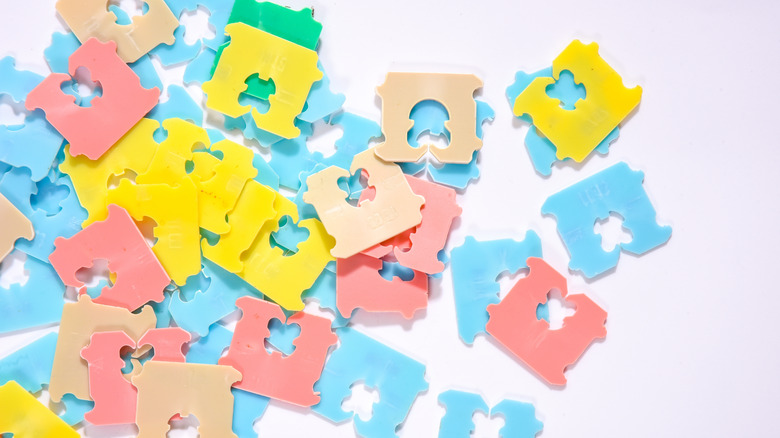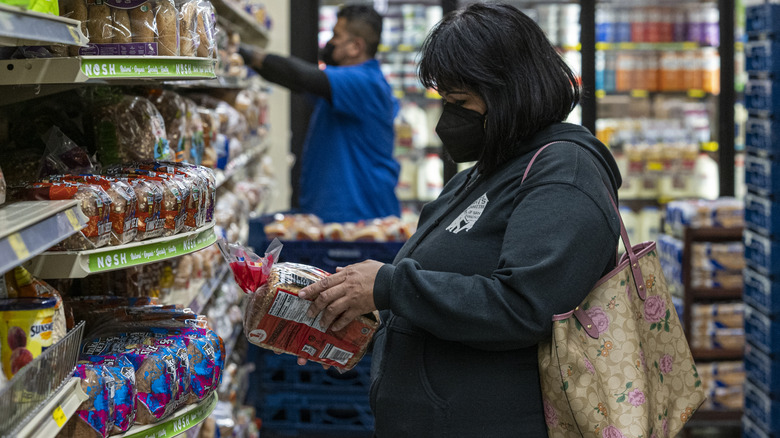Why You Should Pay Attention To Your Bread Bag's Tag Color
Despite its simplicity — some ingredients slapped between two slices of bread — the commonplace sandwich is actually a quite remarkable food. It's completely customizable. Not only can you choose from a vast array of bread types like rye, sourdough, or plain smooshy white, you can opt for something completely different such as a wrap, kaiser, or ciabatta bun. Whether you like deli meats, cheese, egg salad, tuna, salmon, or peanut butter and jelly, the ingredients are practically endless. And you can shake things up by opting for mayo, mustard, aioli, or a smear of something spicy to give it a kick. Yes, there is a sandwich to suit every personality and palate.
The nation has embraced this bread-based creation with 49% of Americans eating one each day (via Smithsonian). According to the University of Washington, this translates into America eating "more than 300 million sandwiches every day." And a survey by YouGov revealed that the country's favorite sandwich is the grilled cheese.
No matter what crowd-pleasing concoction you've set you're heart on, however, the most important thing is using fresh, top-quality ingredients. While it's comparatively easy to avoid green bologna, moldy cheese, and wilted lettuce, it's harder to ensure that your bread is at its freshest. Thankfully, there is a little-known way to weed out the soon-to-be-stale loaves from those that are at their optimum squishiness.
Bread tags colors correspond to different days of the week
Finally, you don't have to scour a pile of baked goods in search of best-before dates. That's right. The secret to quickly picking out the absolute best bread is knowing what the colors of the bread tags mean. What? Did someone just say that the color of those little plastic bread clips actually means something? Yes, that's exactly what we said.
Business Insider explains that the hues correspond to the day of the week on which the loaf was baked. Monday is blue, Tuesday is green, Thursday is red, Friday is white, and Saturday is yellow. Wednesday and Sunday are missing from the roster as many bakeries halt production then (via Eating Well). Why did they create a color code? Mental Floss explains that this enables supermarket employees to easily identify which ones have been sitting on the shelf too long and pull them out. Surely, you don't want to have to walk around the store with a piece of paper with all the days and colors on it though. Thankfully, there is an easy way to remember what color goes with what day. Eating Well says that the colors go in alphabetical order with blue being on Monday and yellow on Saturday. This simplifies things.
So there you have it. You now know the bread tag secret, an insider tidbit of info that will dramatically improve your bread-buying experience.

